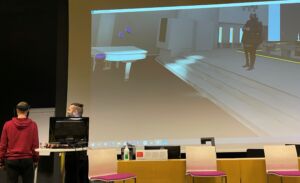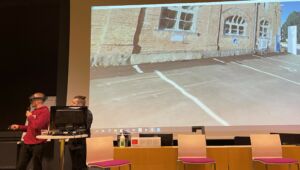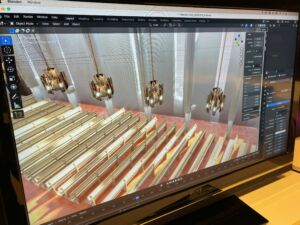SeAMK's metaverse can provide a virtual stage for artists in the future
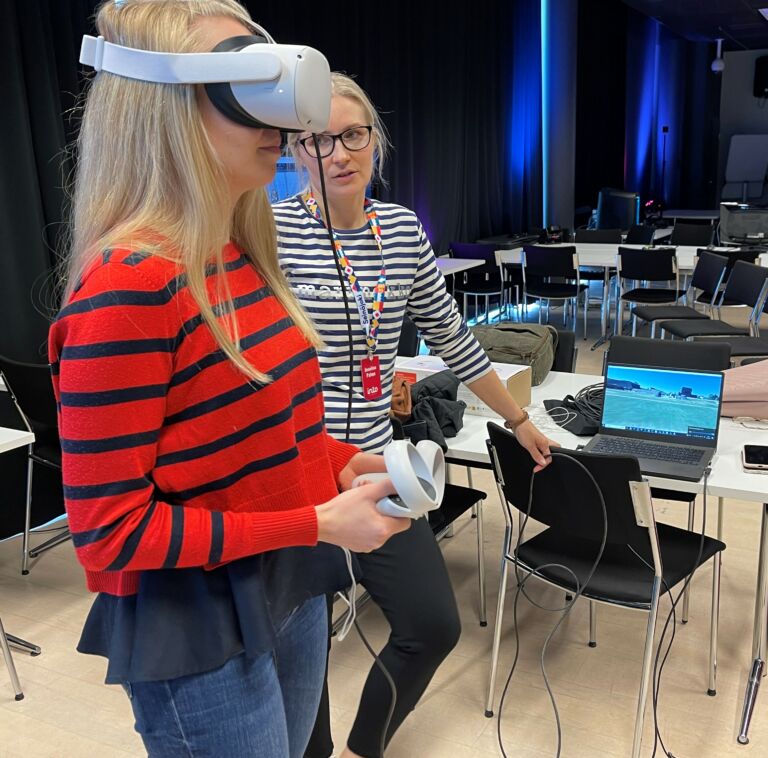
A metaverse, i.e. a virtual and community environment, built in the VIBIOL project managed by SeAMK and Into Seinäjoki was released for the use of companies and communities in the area on 27 April 2023. At the event, the participants were able to take a guided tour of the metaverse and learn about various technological solutions. History was also made at the opening of metaverse, when Antti Railio‘s volumetric performance, captured by 3D cameras, was premiered.
Artist and CEO Antti Railio says that he has been a geek since childhood and is interested in new devices and technologies. That’s why it was easy for him to agree to join such a project.
– Performing in the metaverse was a wonderful experience and it was great to be part of such a historic launch, says Railio.
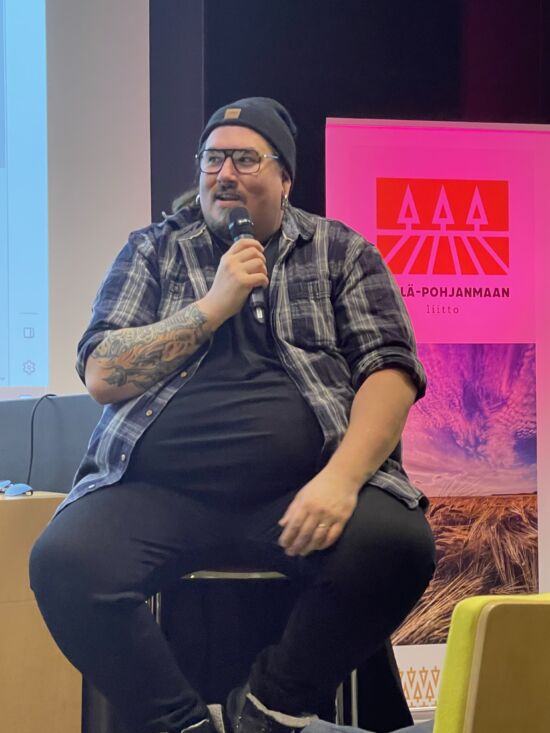
The possibility to truly combine a live and virtual event
In the panel discussion hosted by Into Seinäjoki’s expert, Jenniina Palmu, Antti Valkama from the copyright organisation Teosto, Sami Kerman from the Event Industries Association (Tapahtumateollisuus ry), and artist Antti Railio discussed the opportunities metaverse brings to performing artists and the event industry, and its effects on the industry. The panelists agreed that the Covid-19 pandemic brought virtual gigs and events to the attention of the general public at once, but there is still a long way to go to an experience similar to live event.
– The hybrid effect, where virtual participation would have remained alongside live participation, did not occur after the pandemic. Producing a high-quality virtual event that attracts the public, however, requires know-how and equipment investments, says Teosto’s Antti Valkama.
According to Event Industries Association’s Sami Kerman, virtual gigs remove barriers and offer experiences for those who cannot participate in live events due to travel or physical restrictions.
– Investments in virtual events, new technologies and devices help accessibility, but at least for now, the shared experience, the feeling of being at a gig together, is missing from virtual gigs, says Kerman.
According to Antti Railio, a space like metaverse gives an opportunity to truly combine a live and virtual event.
– Now would be the right time to start building the possibilities of physical experience in virtual events and gigs. The new emergence of visual and performing arts could start through virtual reality, Railio paints the picture.
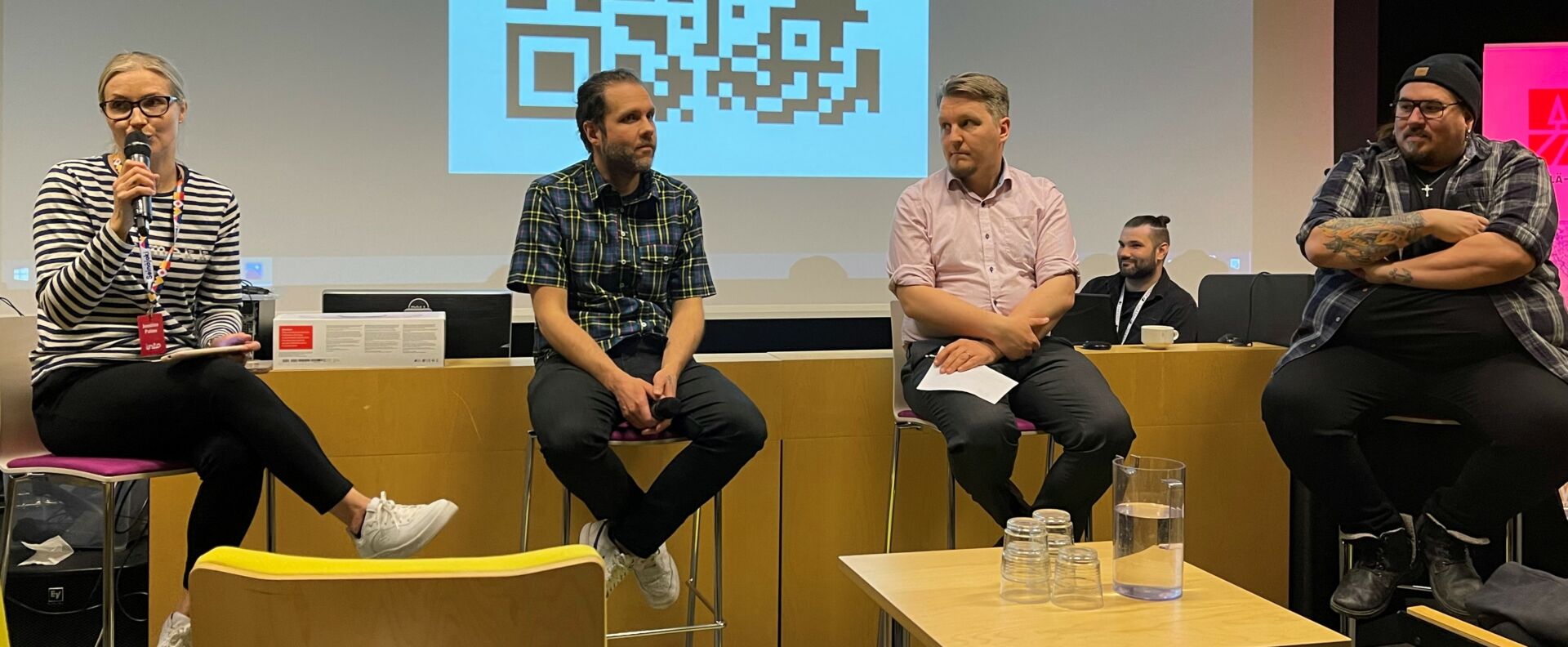
Metaverse offers new opportunities for artists, event and production companies and the public
The panelists see that the multiverse, which reproduces reality as accurately as possible, is still looking for its shape.
– I don’t see that a virtual stage like metaverse is coming right away, but yes, this is the future. However, investments in development work must be made, says Antti Valkama.
According to Sami Kerman, it is important to develop a commercially successful platform that artists and event producers could use.
– Commercial implementation requires innovations from developers and scalability before it is also available to consumers, he adds.
According to Railio, the best result in virtual reality is achieved when you don’t even try to copy reality, but boldly bring fantasy elements and something unprecedented to display.
Contractual matters and payments to be taken into account
According to Teosto’s Antti Valkama, contractually speaking, virtual reality events and gigs are no different than live streams. The licensable rights are the same in virtual reality as well.
– In the same way, prices must reflect the value of music in virtual reality as well as in reality. It is essential to determine how things happen and what the business model is, Valkama states.
Railio calls for finding equal solutions.
– New operating models always require their own time to find the right solutions. I consider it important that the performing party or artist gets their rightful share of the profits. The use of such a new type of platform must be financially viable for all parties involved. We need to do more cooperation between different parties and find a balance in what we do, he sums up.
Sami Kerman from the Event Industries Association also considers cooperation and fairness to be good starting points in the development of a new kind of metaverse platform.
Although there is still room for development and commercialisation in the virtual stage, the panelists see that SeAMK and Seinäjoki could play a role as a centre or a hub of a new kind of XR expertise.
– Yes, such a cluster or development centre would be beneficial for the different operators of the industry. Especially for smaller players whose resources are limited, says Sami Kerman.
The modelled Kalevan Navetta and the OmaSp Stadium serve as examples
At the event, SeAMK’s R&D expert Sakari Pollari and AV producer Joni-Petteri Tuhkanen presented the modelled metaverses, i.e. virtual environments, of Kaleva’s Navetta and OmaSp Stadium.
The event was crowned by Antti Railio’s performance in the metaverse, placed in the Lakeuden Risti Church.
